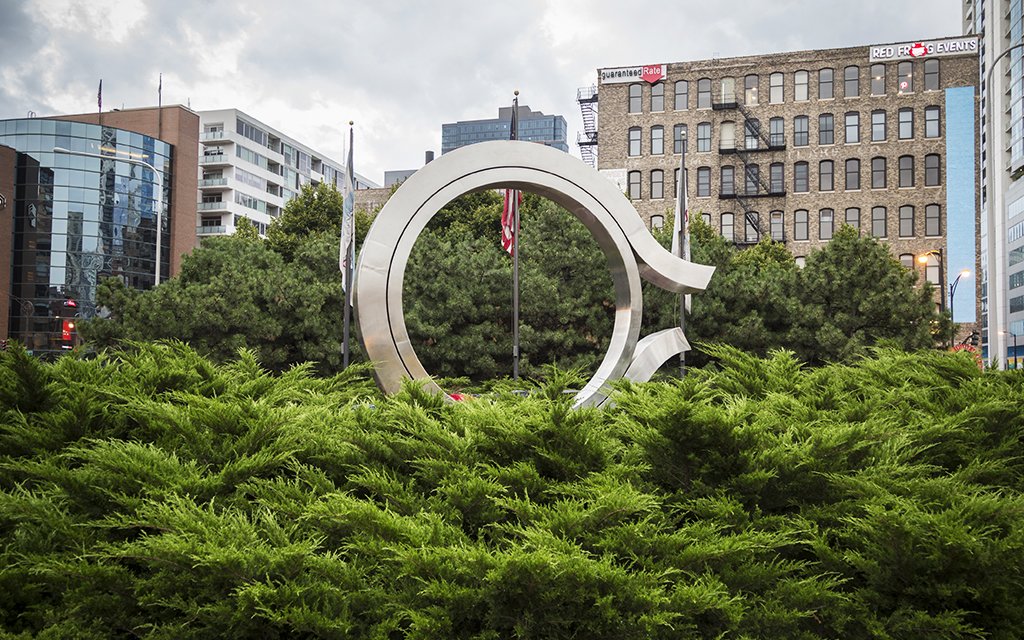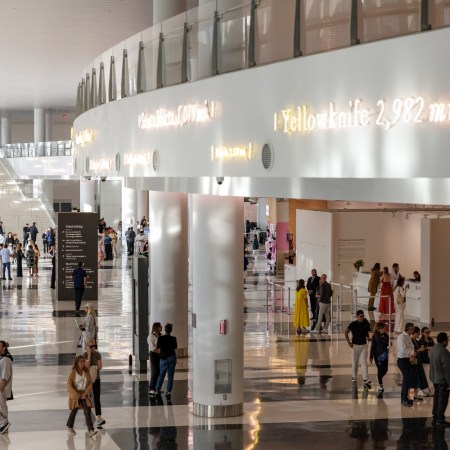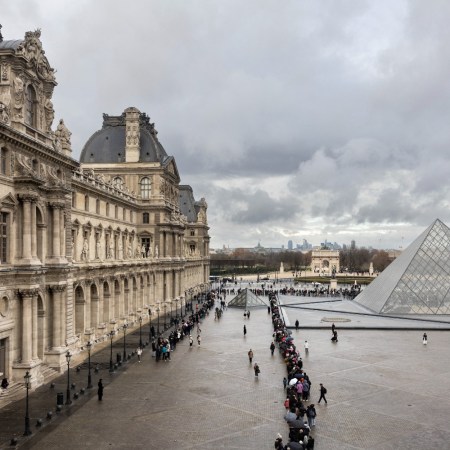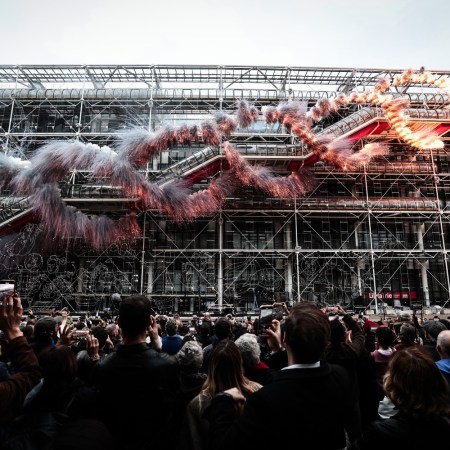When the Picasso was unveiled in 1967, Mayor Richard M. Daley nobly declared, “What is strange to us today will be familiar tomorrow.”
50 years later, that jungle gym of a Cubist structure has become our city’s most iconic landmark.
But there’s more to Chicago’s public art portfolio than often meets the eye.
And so, today, in the year Mayor Rahm Emanuel has declared the “Year of Public Art,” we’re taking a tour of eight public artworks that are hiding in plain sight. So, no, “The Bean” is not included. Instead, we’re focusing on the pieces you probably pass every day without really registering.
They may not be familiar today. But, y’know, they will be tomorrow.
Riverwalk Gateway by Ellen Lanyon
Where to find it: Lakeshore Drive and Wacker Drive
Lining the subterranean passageway on the south bank of the Chicago River, this mural imaginatively documents the history of the city with images of bridges and Buckingham Fountain, Fort Dearborn, the Columbia Exposition, and more. Wonderfully old-fashioned in its way, it recalls the history-driven murals in the Rookery and Marquette Building.
The Town-Ho’s Story by Frank Stella
Where to find it: Ralph H. Metcalfe Federal Building, 77 W. Jackson Blvd.
Taking its name from a chapter in Moby Dick, this mangled mass of aluminum-coated steel wasn’t warmly embraced by the building’s workers when it went up in the early ‘90s. A one-time minimalist whose work became increasingly maximalist — especially in his riotously colored wall reliefs — Stella is famous for artistic re-invention.
Running Table by Dan Peterman
Where to find it: Millennium Park, east of Cloud Gate
Chicago-based Peterman has long combined an interest in recycled material, environmental abuse, and the often-fraught human dynamics of urban life. His 100-foot long plastic picnic table — laughable in its scale, powerful in its communal quality — exemplifies the civic streak that runs through much of his work.
In Celebration of the 200th Anniversary of the Founding of the Republic by Isamu Noguchi
Where to find it: East façade of the Art Institute, Columbus Dr. between Monroe St. and Jackson
With grand entrances on Michigan Ave. and Monroe St., it’s not surprising that most museum-goers miss this fountain by an artist renowned for the deep expressiveness of his minimally worked stone sculptures. While created for the Bicentennial, the piece — a tall, angular shaft and a horizontal cylinder — are nothing, if not timeless.
Agora by Magdalena Abakanowicz
Where to find it: Grant Park, Michigan Ave. at Roosevelt Rd.
Nine feet tall and 106 members strong, Abakanowicz’s array of cast iron figures have never been invisible, but now that everyone has discovered the South Loop, they should have the company they deserve. Headless, menacing, and mysterious, they are no stroll in the park.
America’s Courtyard by Denise Milan and Ary Perez
Where to find it: The lawn of Museum Campus, outside the Adler Planetarium
Echoing ancient, celestially-inspired monuments, this spiral of granite, basalt, and marble blocks overlooking Lake Michigan combines artful minimalism with a rough, wordless wonder. “The different stones suggest the multitudes of people in the Americas,” Milan has stated, “and the basalt the continental origins of the Americas, because it is volcanic and comes from the center of the earth.”

Being Born by Virginio Ferrari
Where to find it: Ohio Street exit of the Kennedy Expressway
Verona-born and Chicago-based, Ferrari has long been committed to engaging with the urban environment. Situated at a major entry point to the Loop, this homage to the tool and die industry suggests a massive machine fashioned by a silversmith.
Lines in Four Directions by Sol Lewitt
Where to find it: 10 W. Jackson
Public art usually finds its place in parks and plazas. But if you keep your head up trouping the Loop, you’ll catch this cool, geometric work from Conceptual art master, Sol Lewitt. A massive relief of aluminum slats arranged vertically, horizontally and diagonally, the piece almost disappears into the building, illustrating Lewitt’s emphasis on art as idea, rather than object.
Photos: Tom Gallagher
This article was featured in the InsideHook Chicago newsletter. Sign up now for more from the Windy City.
























